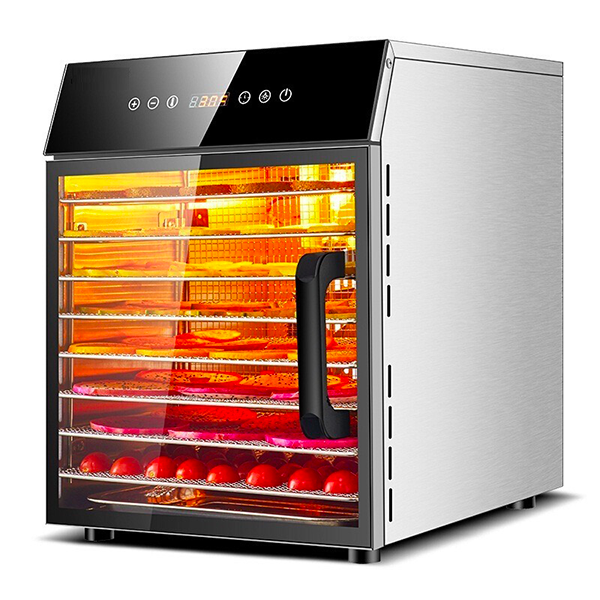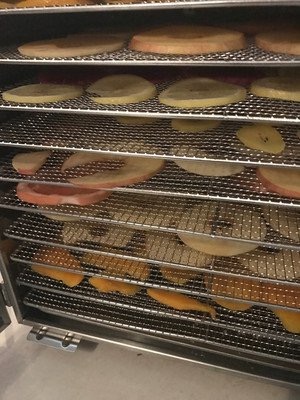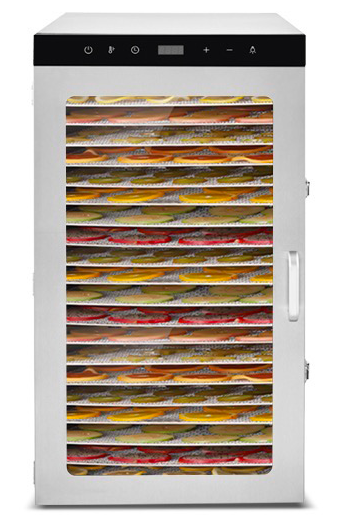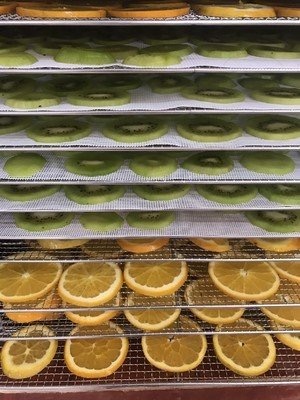
Content Menu
● How Do Food Dryers Work?
>> The Mechanics Behind Food Drying
● What is a Heat Pump Dryer?
>> How Heat Pump Dryers Operate
● Do They Get Hot During Use?
>> Advantages of Lower Temperature Operation
● Benefits of Using Food Dryers
● Types of Food Dryers
>> Choosing the Right Type
● How to Choose a Food Dryer
>> Additional Features to Consider
● Conclusion
● Frequently Asked Questions
>> 1. What is a food dehydrator?
>> 2. How does a heat pump dryer differ from a traditional food dryer?
>> 3. Can I dry meat in a food dehydrator?
>> 4. How long does it typically take to dehydrate food?
>> 5. Are food dehydrators energy efficient?
When it comes to drying food, various methods and technologies can be employed. One such method is using a food dryer, which is specifically designed to remove moisture from foods while preserving their flavors and nutrients. Food dryers, or dehydrators, operate using heat, airflow, and sometimes, a combination of both.
In this article, we will explore the functionality of food dryers, their benefits, and how heat pump dryers fit into this category.

How Do Food Dryers Work?
Food dryers utilize a combination of heat and airflow to remove moisture from the food. Most dehydrators regulate temperature and airflow to ensure even drying without cooking the food. A fan circulates air across the food, removing moisture while preserving the delicate balance of flavors and nutrients.
The Mechanics Behind Food Drying
The drying process begins with the application of heat. When food is placed in the dryer, heat is generated either through electric coils or other heating elements. This heat raises the temperature of the food, causing moisture to evaporate. The fan then circulates this warm air, which carries away the evaporated moisture.
This process creates a controlled environment that prevents spoilage while allowing for optimal drying conditions. The key here is maintaining a balance; too much heat can cook the food rather than dry it, while too little can lead to insufficient moisture removal.
What is a Heat Pump Dryer?
Heat pump dryers are a specialized type of food dryer that use a heat exchanger to heat and circulate air. They can operate at lower temperatures compared to traditional dryers, making them suitable for delicate foods such as fruits and herbs. The operation of a heat pump dryer involves extracting moisture from the food while maintaining its nutritional integrity.
How Heat Pump Dryers Operate
Heat pump dryers work by transferring heat from one place to another using refrigerant fluid. The process involves:
- Evaporation: The refrigerant absorbs heat from the surrounding air or from inside the dryer.
- Compression: The gas is compressed, which increases its temperature.
- Condensation: The hot gas then passes through coils where it releases its heat into the dryer's air stream.
- Expansion: Finally, the refrigerant cools down and returns to its original state to start the cycle again.
This cycle allows heat pump dryers to maintain a consistent temperature that is lower than traditional drying methods while still being effective in removing moisture.
Do They Get Hot During Use?
While heat pump dryers do generate heat during operation, they are designed to operate at lower temperatures than conventional dryers. This means that while they may feel warm to the touch, they do not produce the high heat levels associated with traditional models. The gentle drying process helps in preserving the quality of the food.
Advantages of Lower Temperature Operation
- Nutrient Preservation: Operating at lower temperatures helps retain vitamins and minerals that could be lost during high-temperature drying processes.
- Flavor Retention: Foods dried at lower temperatures tend to maintain their natural flavors better than those dried with high heat.
- Energy Efficiency: Lower temperatures often mean less energy consumption, making heat pump dryers an environmentally friendly option.

Benefits of Using Food Dryers
Using food dryers offers several advantages:
- Nutrient Preservation: One of the key advantages of using a food dryer is the retention of nutrients. By reducing moisture without cooking, these machines allow foods to maintain their nutritional value.
- Extended Shelf Life: Drying food significantly extends its shelf life, making it a smart option for bulk purchases.
- Versatility: Food dryers can handle a variety of items, including fruits, vegetables, herbs, and even meats.
- Cost Efficiency: Using food dryers can save money in the long run, as dried foods can be stored for extended periods without spoilage.
- Convenience: With many modern dehydrators featuring timers and automatic shut-off functions, users can set them up and leave them unattended until drying is complete.
Types of Food Dryers
Food dryers come in various types, each suited for specific applications:
- Conventional Dehydrators: These are widely used for home applications and can vary in size and capacity. They typically use electric heating elements and fans to circulate air.
- Heat Pump Dryers: As mentioned earlier, these operate at lower temperatures and are ideal for preserving delicate foods without cooking them.
- Microwave Dryers: These use microwave energy to remove moisture quickly but may not preserve nutrients as effectively as other methods.
- Freeze Dryers: These machines freeze the food first and then remove moisture through sublimation. They are more expensive but offer superior preservation qualities.
Choosing the Right Type
Selecting the right type of food dryer depends on your specific needs. For instance:
- If you plan on drying herbs or fruits that require careful temperature control, a heat pump dryer might be your best option.
- For bulk drying vegetables or meats where speed is essential, conventional dehydrators may be more suitable.
How to Choose a Food Dryer
When selecting a food dryer, consider factors such as:
- Capacity: Depending on your needs, choose a dryer that can handle the volume of food you intend to process.
- Energy Efficiency: Look for models that consume less energy while providing effective drying capabilities.
- Temperature Settings: A dryer with adjustable temperatures is ideal for processing different types of food.
- Ease of Use: Consider features like digital controls, timers, and ease of cleaning when choosing a model.
Additional Features to Consider
- Material Quality: Ensure that the materials used in construction are durable and safe for food contact.
- Noise Level: Some dehydrators can be quite loud; if noise is a concern for you, look for quieter models.
- Warranty and Support: A good warranty can provide peace of mind regarding your investment in a food dryer.
Conclusion
In conclusion, food dryers, particularly heat pump dryers, are invaluable tools in food preservation. They allow us to extend the lifespan of foods while maintaining their quality. Whether you are a home cook or running a commercial operation, investing in good quality food dryer can optimize your food storage methods and enhance your culinary creations.

Frequently Asked Questions
1. What is a food dehydrator?
A food dehydrator is a machine that removes moisture from food items, preserving them for long-term storage while maintaining their flavor and nutrients.
2. How does a heat pump dryer differ from a traditional food dryer?
Heat pump dryers operate at lower temperatures than traditional food dryers, making them suitable for more delicate foods without cooking them.
3. Can I dry meat in a food dehydrator?
Yes, many food dehydrators are capable of drying meats; however, it's important to ensure they reach safe temperatures for preservation.
4. How long does it typically take to dehydrate food?
Dehydrating times can vary based on the type of food and the drying method but typically range from a few hours to a full day.
5. Are food dehydrators energy efficient?
Yes, food dehydrators use less energy compared to ovens or other drying methods, making them a cost-effective choice for food preservation.












